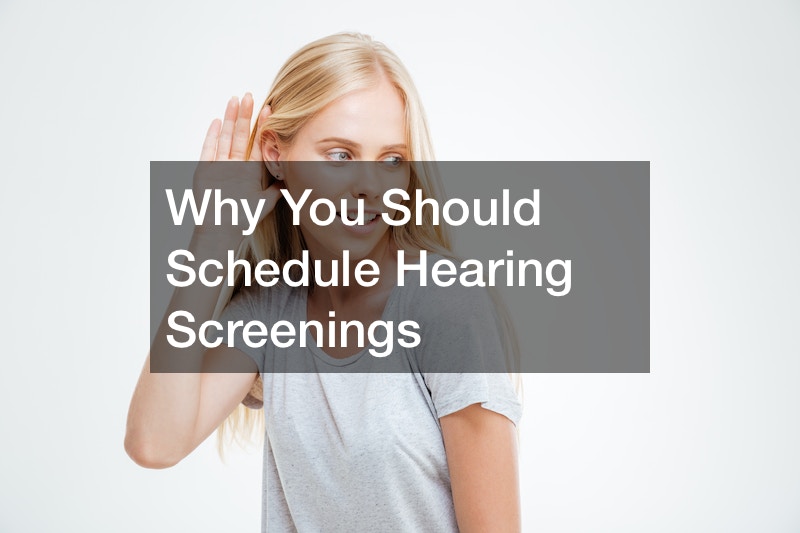How To Pick The Right Type Of Hearing Aids For Your Hearing Needs

Hearing is one of the body’s five senses. Some people have the hearing sense while others lack it. For those that can hear, the hearing abilities can diminish over time to the extent of a total loss of the hearing ability. Hence, if you notice some change in your hearing ability, you should go to the hospital for hearing screenings to ascertain the problem and cause for the change in your hearing abilities.
Most people experience hearing problems as they age. If you are experiencing gradual hearing loss, your doctor will prescribe the appropriate hearing aids as they are the best on how to get your hearing better. A doctor prescribes adult hearing aids as a treatment for hearing loss. Wearing them as recommended by the healthcare provider will improve your hearing.
You must wonder, ‘Are hearing aids effective?’ hearing aids are effective if you wear them as directed by your healthcare giver. An audiologist may diagnose you with severe hearing loss, implying you can barely hear speech. You may wonder, ‘Which hearing aid is best for severe loss?’. In such a case, a behind-the-ear hearing aid is most appropriate.
Are you not able to hear everyday sounds like a bird chirping or a dog barking as well as you used to? Do you find yourself having to crank the volume up on the radio or the TV? Do you constantly have to ask people to repeat themselves when they are talking to you?
If you answered yes to any of those questions, chances are you may be suffering from hearing loss. But it’s nothing to be embarrassed about. In fact, about 20% of all American report some degree of hearing loss and by 2025, it’s estimated that 900 million people worldwide will be hearing impaired to some degree.
You may be wondering, how do I know if I’m losing my hearing? Firstly, you should know that they are three types of hearing loss: conductive (involving either the middle ear or outer ear), sensorineural (inner ear) or a combination of both. Some hearing loss is due to old age or overexposure to loud noises, yet other times, your hearing may be impaired by the buildup of earwax.
Generally speaking, here’s what you need to look for:
- Difficulty understanding words, especially in crowded settings
- Difficulty hearing consonants and hearing speech come through muffled
- Turning up the radio or TV
- Asking people to speak up or speak slower
There are any number of reasons for hearing loss and if your hearing is bad enough, you may require the use of hearing aids to hear better and more clearly. Nowadays, the hearing market is flooded with many hearing aid brands, with everything from an invisible hearing aid to small hearing aid to larger hearing aids to many other forms of hearing device.
With so many hearing aid brands out there, you’re probably wondering, which is the best for me? For starters, you need to know that hearing aid brands offer a variety of hearing aids that differ in price, in size, the way they sit in an ear and features.
- CIC (completely in canal): These hearing aids are molded to fit inside a person’s ear and can improve mild hearing loss. These are small and not really visible, but they don’t often come with any extra features. They can also very easy become clogged by earwax.
- TIC (in the canal): These are custom molded as well and fits partly in one’s ear canal. These are also less visible and come with more features, but they have proven to be difficult to adjust.
- BTE (behind the ear): These hook over the top of your ear, much like headphones, and rest behind your ear. The hearing aid is connected by a tube to an earpiece that rests in the ear canal. These are largely than some of the previous styles mentioned, but can pick up more sound than some of the smaller models.
- RIC (receiver in canal): These are similar to BTEs, except that the two pieces of the hearing aid are connected by wire. These are less visible, but can also be susceptible to earwax clogging.
- Open fit hearing aids: These are also similar to BTEs, but these keep a person’s ear canal open, which allows sounds of low frequency to enter the ear and then amplified by the hearing aid. One benefit to these is that they don’t plug ears like other small models, which helps a person’s own voice sound better than it does with other models.
It’s true there are many hearing aids and hearing aid brands, but before you buy anything, keep these things in mind:
- Get a hearing test. You need to determine how bad your hearing loss may be.
- Visit an audiologist. They will be able to talk to you about hearing aid options and help you choose the right ones for you.
- Consider a trial period. As you look for the right hearing aids, trying various styles out may help in finding the best fit.
- Plan for the expense of hearing aids. Even the cheapest ones run about $1,500.
- Think about the future. Find a comfortable model, but also think about whether that model will help you if your hearing gets worse.
If you’re dealing with hearing loss, consult a specialist to help determine the best way to deal with it and the best hearing aids to improve your hearing.

